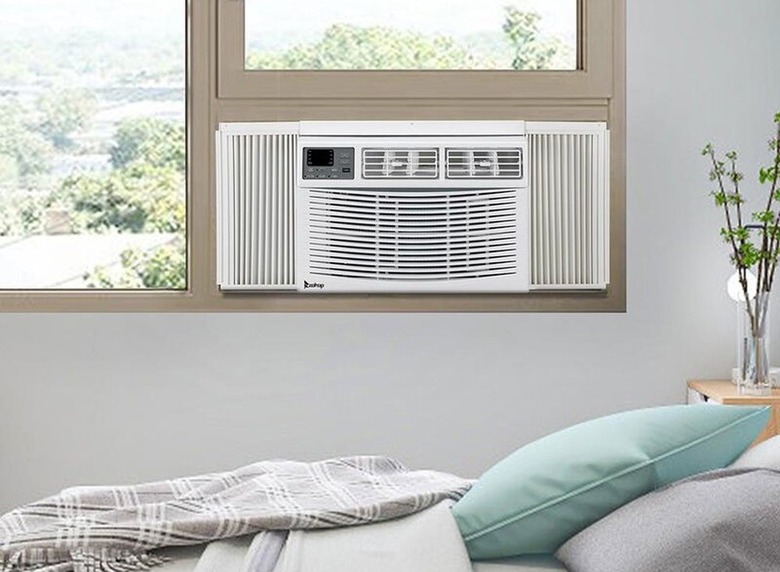Can I Put An Air Conditioner On Its Side?
We may receive a commission on purchases made from links.
Air conditioners shouldn't be turned on their sides at all, even during shipping and storage if possible, but they should never be run or installed that way. All air conditioners are also dehumidifiers, and the dehumidification system relies on gravity to take water away from the unit and drain it from the bottom of the air conditioner's case. An understanding of how air conditioners work can help explain why a vertical rather than horizontal positioning will lead to unit damage.
Tip
You should always keep your air conditioner upright, even during storage or shipping when possible. Air conditioners should never be installed or operated on their side. It can damage various components and interfere with normal operation.
Damage to the Compressor
Damage to the Compressor
The compressor of an air conditioner is an important part of A/C operation, helping to move the refrigerant to dissipate the heat. It's a bit like a small electric motor in that it has gears and turning parts that require lubrication. The lubrication in the air conditioner compressor comes in the form of oil, typically located in the compressor case itself.
When an air conditioner is turned on its side, this oil settles on the bottom half of the compressor and potentially deprives part of the compressor of oil, which can lead to damage and, eventually, compressor burnout. A sideways orientation can also damage the compressor mounting, which can affect operation.
Condensation Won't Drain Properly
Condensation Won't Drain Properly
A window air conditioner, just like all other air conditioners, dehumidifies the air to improve indoor comfort. The air conditioner pulls indoor air in and blows it across cold copper coils filled with refrigerant. These coils "sweat" the humidity in the air in the form of condensation, which has to escape the air conditioner to keep it running properly. This condensation drips, through gravity, down into a condensation pan. If an air conditioner is positioned on its side, this water will drain down into the case, potentially damaging the unit and leaking water back into your home.
Ventilation Grates Collect Rainwater
Ventilation Grates Collect Rainwater
Air conditioners have ventilation grates, or fins, on the sides and bottom of the unit. These grates bring sufficient airflow into the hot side of the unit, allowing for the dispersal of heat that the unit removes from your home. If an air conditioner is situated on its side, rainwater will drain into these grates and damage delicate internal mechanisms.
Storage, Shipment, and Installation
Storage, Shipment, and Installation
It's best to keep your air conditioner upright, even when you move, store, or install it. Even short-term placement on the side can affect the compressor mounting or cause water to go into areas its not meant to go.
If an air conditioner has been stored on its side, or if it has been shipped that way, turn it to a horizontal orientation for at least 24 hours prior to running the unit. This allows sufficient time for any oils and lubricants to resettle back to their proper levels, providing protection for internal gears and moving parts.
When you move the unit to the location where you plan to install it, you may have to set it on its side temporarily prior to setting it in place. It's fine to do this, as long as you don't install the unit sideways and you don't turn it on for 24 hours.
